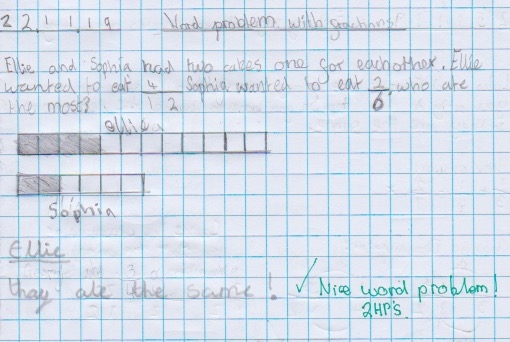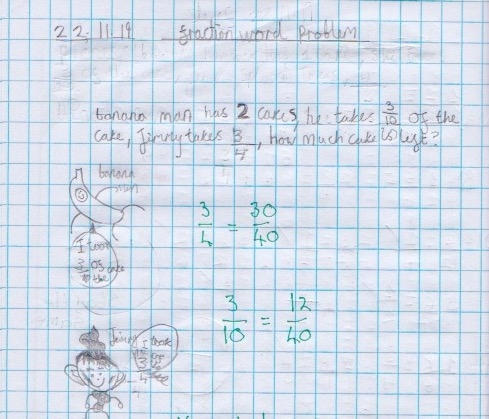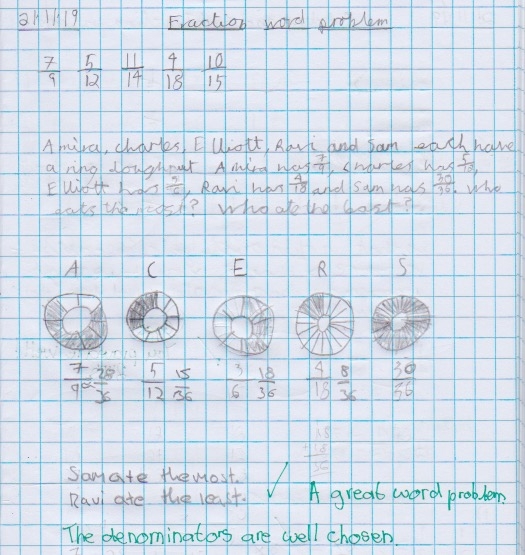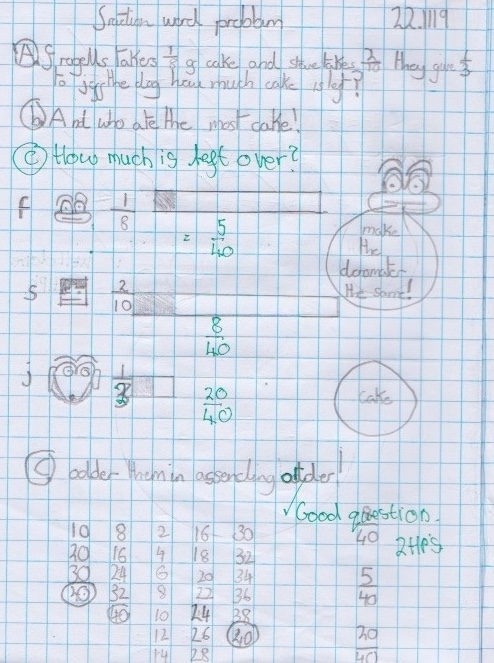How to evaluate maths journals
Maths journals give you amazing insight into how your learners think. But children’s journals are unique, so what’s the best way to evaluate them?
Journalling is the part of maths mastery that helps you to find out more about your learners. Evaluating a journal can tell you a lot about how a child thinks, what they’re interested in, and how well they understand the learning.
Journal work varies in quantity and quality, tends to be individualised, and has the potential to be taken in many different directions. In other words: trying to evaluate journals is tricky.
Luckily, there are a number of things you can do to chart a learner’s progress and help inform any summative assessments.
Here’s how you can assess learners’ maths journal work.
How to use maths journals in lessons
Before I talk about how to assess journals, first let’s look at how to use maths journals in lessons. Here are some general guidelines on how to approach journalling.
- Know that all children need to journal in some maths lessons. It’s not an add on to the lesson for advanced learners who happen to finish first.
- Encourage every child to ‘get their thinking out’ and onto the page.
- Know that journalling can involve writing, diagrams, or photos.
- Include a variety of journals throughout a unit of work — creative, descriptive, evaluative, investigative, and formative.
- Remember it’s their journal, so it can reflect their ideas and thinking. Mistakes are allowed!
When starting out on the road to maths mastery, actually doing some journalling in lessons is the first major milestone. It takes time, there’s a lot to fit in a lesson.
As your learners grow in confidence, you can progress by developing each of the different types of journalling. Look for opportunities to journal and build it into your lessons so the approach isn’t haphazard.
Evaluating how your school uses journals? Try a checklist.
Once journalling has been established throughout your school, start drawing up a simple checklist to steer staff on what they should look for in their journals.
The following example is a bit formal, but you can easily adapt or change it depending on where you feel you are in your practice.
Maths Journal Evaluating Checklist
The checklist is wide-ranging, so it doesn’t focus on all areas. However, you should start to see a snapshot of how to move your classroom journalling forward.
Remember to be sensitive. Instead of critiquing individuals, use this checklist to identify where learners’ strengths lie, and encourage staff to work together and share their journalling successes. So, now for the big question how do you mark individual journals?
Setting up a journalling activity
The following examples are from a set of Year 6 journals working on fractions, Maths — No Problem! Book 6A, Chapter 3 and focus on differentiation.
Four lessons into the fractions chapter, learners know that they need to make the denominators the same in lessons in order to compare amounts. I wanted to check their level of confidence and understanding, so I set a descriptive journalling activity.
I asked the class to write a realistic word problem. To differentiate, I gave my class some options:
- You could use between two and five fractions.
- The problem could actually be worked out!
- You could ask more than one question in your problem.
Now let’s look at some of the journal entries that my class produced and how I evaluated them.
Learner #1: standard journal entry

Ellie and Sophia had two cakes, one for each other. Ellie wanted to eat 4⁄12. Sophia wanted to eat2⁄6. Who ate the most?
Maths journal evaluation
This is a standard journal entry. It is logically presented, has a simple fraction problem to solve, and shows the problem on a bar model type diagram. Only one fraction has to be changed in order to find the answer.
Transform Your Maths Assessment
Insights — our online assessment tool — gives you instant, powerful data to identify gaps and improve results.

Learner #2: slightly more advanced entry

Banana man has 2 cakes. He takes 3⁄10 of the cake. Jimmy takes 3⁄4. How much cake is left?
Maths journal evaluation
This journal entry is slightly harder as both fractions had to change in order to find the common denominator. It had to be reworked slightly when my class realised that adding the fractions took it over one whole. The learner then changed the question from one cake to two cakes.
Learner #3: extending the problem

Amira, Charles, Elliot, Ravi and Sam each have a ring doughnut. Amira has 7/9, Charlies has 5⁄12, Elliot has 3⁄6 Ravi has 4⁄18 and Sam has 30⁄36. Who eats the most? Who ate the least?
Maths journal evaluation
This journal entry extends the problem by including the maximum of five fractions. This learner cleverly picked a denominator with lots of factors to make their problem work. (This builds on learning in the previous chapter.)
Learner #4: advanced journal entry

A. Frogells takes 1⁄8 of cake and Steve takes 2⁄10. They give1⁄3 (corrected to 1⁄2) to Jiff the dog. How much cake is left?
B. And who the most cake?
C. How much is left over?
Maths journal evaluation
This final example was the most advanced. Once the learner solved the problem by converting the three fractions, they reworked the problem to increase the difficulty. This time, each person took their piece one at a time from what was left rather than altogether from the one whole.
So, 1 – 1⁄8 = 7⁄8
7⁄8 – 2⁄10 = 35⁄40 – 8⁄40 = 27⁄40
The dog then ate 1⁄2 rather than 1⁄3
This then meant: 27⁄40 – 20⁄40 = 7⁄40
The above examples all have a logical layout and include details like illustrations and characters in order to make them easy to follow. Learners showed they could use speech bubbles to show hints, use bar model diagrams, and lay out times tables in order to find the common denominator.
An open-ended activity like learners writing their own word problem encapsulates the idea of ‘digging deeper to build higher’. Though learners made mistakes, they identified them when other members of the class worked through the problems.
Children tried to challenge themselves and each other. Evaluating these journalling activities also goes some way to helping you measure that slightly invisible but important attribute of confidence. It’s worth doing.
